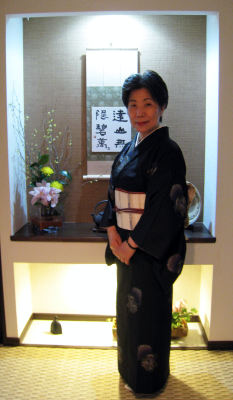It is with great sadness that I have to announce the death of Yoriko Kobayashi-Sato, who was Japan’s foremost scholar of Netherlandish art.
Yoriko Kobayashi was born in Yamaguchi in 1948. She studied art history at Waseda University, Tokyo. Having initially worked for the Japanese parliament, she decided to follow her heart and devote her life to scholarship. Her fascination for the work of Johannes Vermeer brought her to the Netherlands in 1982, where for three years she studied in Utrecht with Emil Reznicek and Albert Blankert. Realizing how much work had already been done on the artist, she turned to the Utrecht Caravaggisti as a source of inspiration for Vermeer and settled with Hendrick ter Brugghen. Starting from 1985, her first publications were on Ter Brugghen.
After returning to Japan and finishing her studies at Keio University, Tokyo, in 1987, Kobayashi became a prolific author. Her books on Vermeer (only published in Japanese) became best sellers. She published on many aspects of Dutch art, and was the author of the first repertory of Flemish and Dutch paintings in Japanese collections, several (contributions to) exhibition catalogues, as well as numerous scholarly articles. Another line of her research was on the ‘creative reception’ of Western art into Japanese art, and more in general the cultural exchange between Japan and the West, which she broadened to global art history later in her career. This culminated in the book Dawn of a global age: visual dialogue between Edo Japan and the West, which she published in 2017, in collaboration with Mia Mochizuki. She also devoted much time and energy in translating key publications on Dutch art into Japanese, both for students and for a general audience.
Kobayashi held teaching positions at several Japanese universities since 1987. As such she played an important role in promoting the interest in Dutch and Flemish art of the early modern period and she nurtured a generation of Japanese students and scholars in Western, and particularly Dutch art. Most of those who later came to Europe and America to specialize in Netherlandish art had profited from her teaching, and had been encouraged by her to study abroad even when the funding environment became more restricted. She ended her career as professor of Art History at Mejiro University, Tokyo, from which she retired in 2019. Upon her retirement she was honored with a festschrift by her pupils and her international friends.
Born shortly after the end of World War II, Yoriko stood with one leg in Japanese traditional culture, and with the other in Western modernity. Her years in Utrecht as a graduate student liberated her from the social pressures and obligations which she felt had held her back before coming to Europe. Despite her modest appearance she was an independent thinker; ‘eigenzinnig’ and with a wicked sense of humor. Those who have travelled to Japan and visited her at home will remember not only her hospitality, but also her love of Japanese culture. She wore kimonos, practised calligraphy, played traditional music and published poetry in Japanese.
Throughout her life she kept travelling to the Netherlands to do research at the RKD and the National Archives, attend conferences, visit exhibitions, buy books and spend time with friends. She was a lifelong member of HNA and attended most conferences. As representative of HNA in Japan she organized local meetings of likeminded scholars.
Yoriko was already severely ill when in February she flew to Holland to see Vermeer’s paintings for a last time. She died in Kawasaki on May 10th 2023. She leaves behind her husband Shigeki Sato who is a professor of German literature.
Marten Jan Bok
